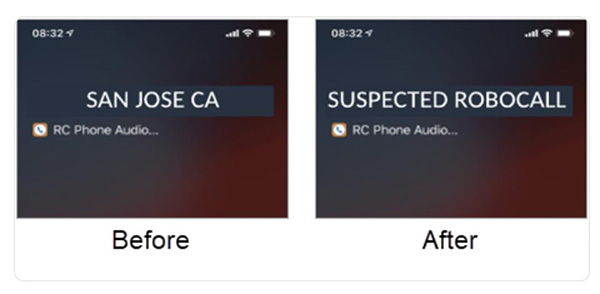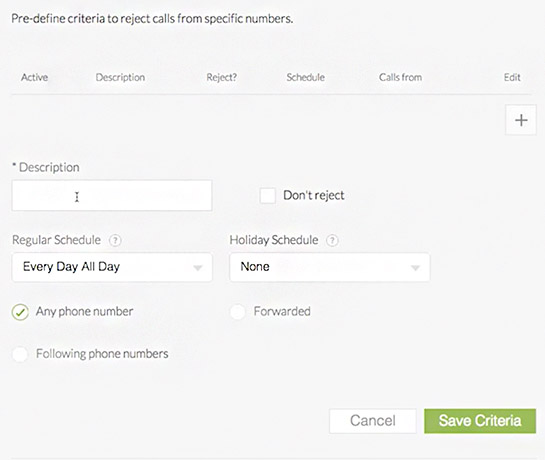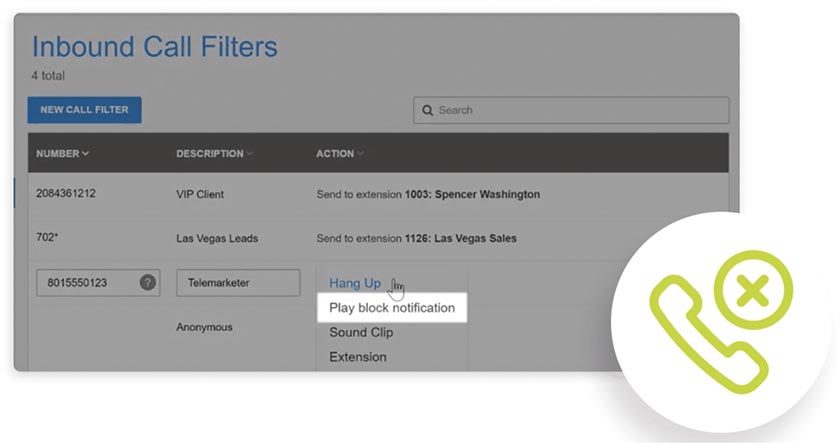Robocalls have produced billions of scam calls every year, affecting millions of U.S. phone users. They often result in numerous consumer complaints and massive financial losses. Amid the government’s continuous efforts to combat illegal robocalling, the volume of scam calls appears to increase every year. We analyzed the latest robocall statistics to demonstrate why it is a pervasive issue across the U.S.
Robocall Growth Statistics
The robocall volume in the U.S. has not seen any significant decrease in the last few years. While the government’s mitigation efforts have kept things from getting worse, scammers continue to innovate fraud methods. These robocall stats show the recent trends in robocall and spam call volume.
1. U.S. consumers received over 50.3 billion robocalls in 2022
(Source: PR Newswire)
Despite widespread enforcement by the U.S. government, the robocall volume in the U.S. hasn’t changed. The most unwanted robocall campaign in 2022 involved a potential medical compensation related to Camp Lejeune.
Amid mitigation efforts like Secure Telephone Identity Revisited (STIR) and Signature-based Handling of Asserted Information Using Tokens (SHAKEN) standards, consumers are advised to continue to protect themselves using call blocking apps like YouMail and Robokiller.
STIR/SHAKEN is a technology framework used by the originating service provider to verify the caller ID to reduce fraudulent robocalls and phone number spoofing. Here’s what each framework means:
- Secure Telephone Identity Revisited (STIR): STIR is a call authentication protocol that verifies the calling party’s authorization to use a specific phone number for incoming calls.
- Signature-based Handling of Asserted Information Using Tokens (SHAKEN): SHAKEN is a set of standards for how STIR should be deployed by service providers across their networks.
2. Scam & spam robocalls now make up roughly 41% of overall robocall volume
(Source: PR Newswire)
In 2022, experts saw an accelerating downward trend in the number of scam and spam robocalls, as they used to make up 60% to 70% of robocall volume. Scam calls are now down to 30%, while telemarketing calls are now only about 13%. STIR/SHAKEN helps track down scam calls disguised as telemarketing campaigns by evaluating calls with spoofed caller IDs.
3. Robotexts have surpassed robocalls for the third year in a row
(Source: Robokiller)
Since 2019, robotexts have zoomed past robocalls, sending an all-time record of 225 billion unwanted texts compared to robocall’s 78 billion in 2022. Scammers are now capitalizing on SMS fraud as robocalls garner most of the U.S. government’s attention.
4. 2019 was the biggest year for robocalls, receiving roughly 5.7 billion spam calls
(Source: WFMY News)
October 2019 is the worst to date when it comes to robocalls, setting an all-time record of 5.7 billion spam calls over the course of a month. That’s equivalent to 182 million calls per day, or around 2,115 calls per second. The spike in robocalls is primarily due to the increase in scam calls related to healthcare, student loan, warranty, and Social Security.
5. Auto warranty renewal was the biggest robocall complaint in 2021
(Source: FCC)
Auto warranty renewal calls filed with the Federal Communications Commission rose from 7,600 in 2020 to over 12,000 in 2021, making it the top robocall complaint for two years in a row. This type of robocall includes information about your car and warranty that make the call appear legitimate. It begins with an automated message that instructs the call recipient to press a specific number to speak with a “warranty specialist.”

RingCentral labels suspicious incoming calls with “suspected robocall” if the caller ID is present in a blacklist. (Source: RingCentral)
RingCentral is a leading business phone system provider that integrates phone, video, team messaging, fax, and contact center in one easy-to-use solution. Its call screening feature gives you complete control over who can reach you by phone. If you receive an unsolicited phone call, it will provide additional information to help you decide whether to answer the phone or not. Check out our RingCentral review to learn more about its pricing and rich offerings.
Financial Losses by Robocall Scams
A large portion of robocalls are fraudulent attempts at stealing money or personal data from unsuspecting victims. Robocall losses are still higher than ever, and a loss to a robocall scam could potentially lead to financial hardships. These robocall stats are a powerful reminder of the financial impact of scam calls.
6. $39.5 billion was lost to phone scams in 2022
(Source: Truecaller)
An estimated $39.5 billion was lost to phone scams alone from spring 2021 to spring 2022, a 32.5% increase compared to the previous year’s $29.8 billion. This is the highest reported loss since Truecaller began researching spam calls in the U.S. eight years ago.
7. North America to suffer over 50% of global losses to fraudulent robocalls in 2023
(Source: Juniper Research)
Experts predict that mobile subscribers will lose $58 billion to unwanted robocalls in 2023. This will be driven by the increase in scam calls that use caller ID spoofing and unauthorized call forwarding. Amid efforts of mitigation, Robokiller predicts robocalls will reach 82 billion in 2023 and drive financial losses to reach $70 billion by 2027.
8. Robocall growth rate has slowed down, but financial losses sped up
(Source: Robokiller)
Experts only saw an 8% increase in the number of robocalls sent in 2022, a slow growth rate compared to 2021’s 32% increase. The slow growth can likely be correlated to the government’s efforts to curb spam calls. However, scammers are now focusing on getting a higher return per scam attempt. The amount lost to robocall scams in 2022 reached $65 billion, more than double 2021’s $30 billion.
Robocall Prevention Statistics
As robocalls become more sophisticated in nature, it is important to be aware of the dangers and the right steps to prevent them. Here, we explore robocall trends highlighting the need for proactive measures and continued vigilance from spam calls.
9. 49% of those who signed up for the Do Not Call registry say it’s ineffective
(Source: VirtualPBX)
More than two-thirds who signed up for the National Do Not Call Registry (NDNCR) still receive the same number of robocalls, while 19% say they receive more robocalls. The Federal Trade Commission (FTC) explained it simply cuts down the number of telemarketing calls, but it doesn’t completely shield callers from every type of unwanted call.
10. Calls signed with C attestation were over five times more likely to be robocalls
(Source: TransNexus)
With STIR/SHAKEN protocol, all calls are subjected to the three-level attestation scale, which verifies the validity of a calling number. A C-level rating is the lowest level of attestation, which means the originating telephone service provider cannot authenticate the call source. Some carriers have policies to block calls transmitted with a C attestation.
11. 43% of scam victims are more likely to download a spam blocker or caller ID app
(Source: Truecaller)
Downloading a spam blocker or caller ID app is the most predominant measure taken by consumers after being scammed by a robocall. Out of the 2,000-plus respondents, 37% opted to change their credit card or change account numbers to avoid further financial losses. However, higher income groups are more likely to take action compared to households whose income is less than $50,000.

Nextiva prevents callers from reaching your number if they are presenting a private number or blocking their caller ID. (Source: Nextiva)
Nextiva is a unified communications solution with extensive collaboration and customer engagement capabilities. Advanced call handling features help you efficiently route, hold, divert, and block incoming calls. Anonymous call rejection is a Nextiva feature that lets you set conditions for specific phone calls with private or anonymous numbers. Check our Nextiva review to get insights on pricing, features, and user reviews.
Robocall Demographics
The number of victims who lost money from a robocall scam remains a significant concern. Younger age groups (between ages 18 to 44) account for over half of all victims, but older generations (over 45 years old) have greater financial value for scammers. The following statistics show the type of demographic groups mainly targeted by robocalls.
12. Men are more likely than women to get scammed by robocalls
(Source: Truecaller)
In 2022, about 55.6% of those who have been victims of phone scams were men, compared to only 42.2% who were women. Across age groups, younger men are more likely to lose money from a phone scam, particularly ages 18 to 34 (46%) and ages 35 to 44 (51%).
13. 68.4 million Americans (26%) fell victim to phone scams in 2022
(Source: Truecaller)
Around 68.4 million Americans reported losing money from phone scams in 2022, a 3% increase from 2021. It affected one in three Americans, with 20% getting scammed more than once. The average reported loss was $577, a 14.94% increase from the average of $502 in 2021. Despite efforts to regulate the STIR/SHAKEN framework, scammers are finding more ways to sidestep government regulation.
14. Texas is the most targeted state for robocalls
(Source: Robokiller)
Texas received a staggering 10.7 billion robocalls in 2022, leading the U.S. in the highest number of robocalls received for the fourth year in a row. It surpassed California by nearly 3 billion, followed by Florida, Ohio, and Georgia. All these states have the highest rate of retired Americans. According to Robokiller, the elderly between the ages of 60 to 69 are the main targets of scammers to make a profit.
15. Robocalls topped the list of consumer complaints in North Carolina in 2022
(Source: Spectrum News)
The North Carolina Department of Justice reported that out of nearly 25,000 consumer complaints received in 2022, almost 6,000, or 25%, were robocalls and telemarketing. The anti-robocall litigation task force is tracking down gateway providers or small phone companies that enable legal robocalls from abroad to get into the U.S. telephone system. These companies get paid by participating in these robocalls.

GoTo Connect comes with comprehensive call filtering options. (Source: GoTo Connect)
GoTo Connect is a voice-over-internet-protocol (VoIP) provider offering virtual phone numbers, unlimited international calls, and basic contact center functionality. It has various business phone features, including unlimited extensions, smart call routing, ring groups, and hot desking. Avoid spam callers with an inbound call filter that includes unlimited call filtering settings. Discover more features by reading our GoTo Connect review.
Frequently Asked Questions (FAQs)
There is no surefire way to prevent robocalls completely, but there are a few things you can do to lessen their frequency. The first is to add your number to the Do Not Call registry, but note that it only works for curbing legal telemarketing robocalls. Download a call blocker app to block spam calls coming through. Another option to consider is a VoIP phone provider with a call filtering feature.
Robocalls are often used for telemarketing purposes, political campaigns, public service, and emergency announcements. They also provide useful information like booking details, appointment reminders, and flight cancellations. However, most robocalls are typically associated with scams, involving attempts to sell you services, pay your debts, or solicit a donation.
According to the National Consumer Law Center, small, pop-up VoIP providers are responsible for transmitting robocalls through telephone subscribers. They earn from every answered robocall. Although most of them get caught, they are not criminally prosecuted, so they keep doing it to make more money from these calls.
Bottom Line
These robocall statistics show that scam calls remain a serious issue. Despite government regulations and carrier efforts to stop these calls, scammers are getting more creative and resourceful with their approach. Although experts say 2023 will be a banner year for SMS scammers, consumers should remain vigilant against scam calls and employ preventive measures immediately.